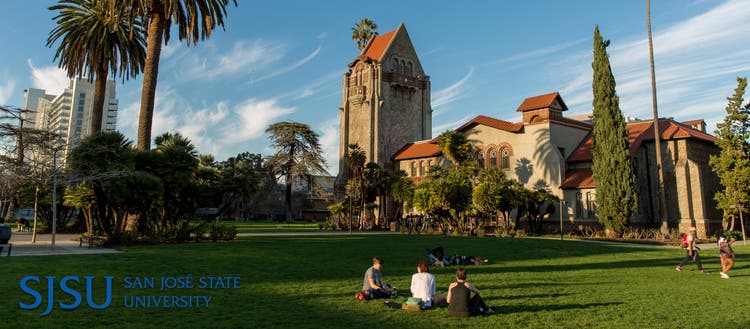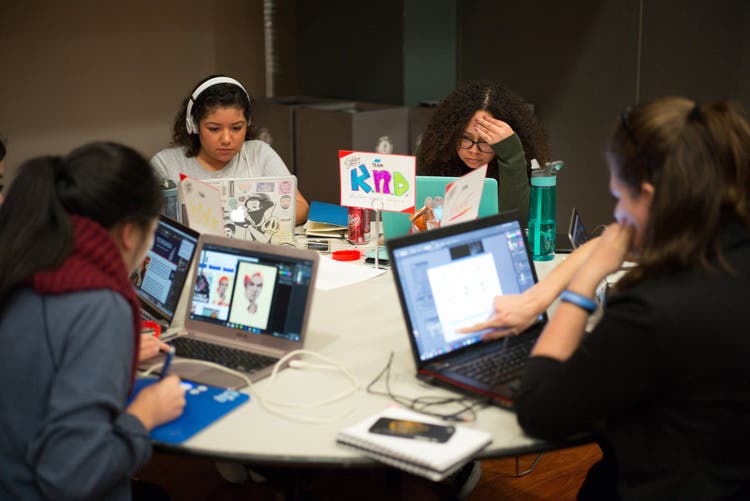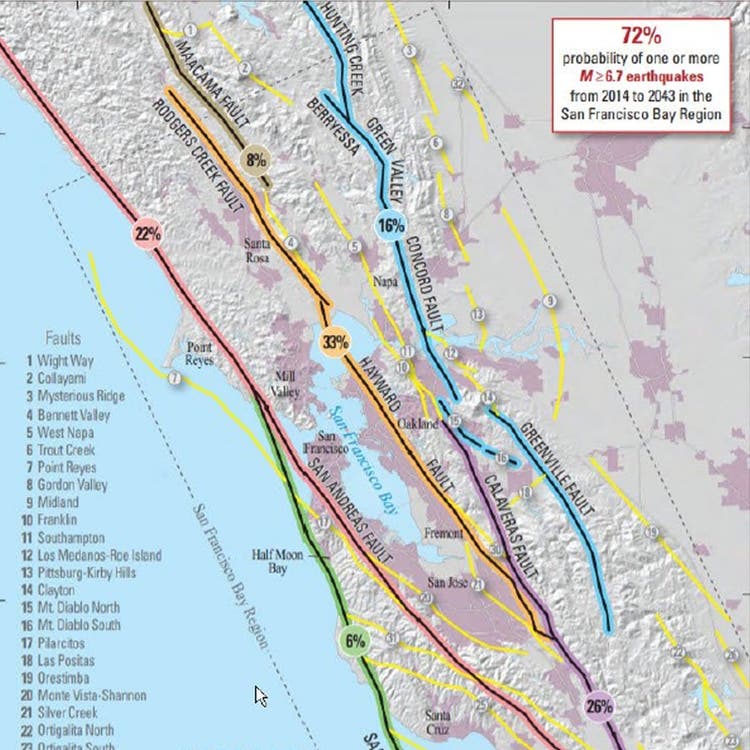San José State University inspires innovation and discovery as an Adobe Creative Campus

Courtesy: SJSU photo by David Schmitz.
Located in the heart of Silicon Valley, San José State University (SJSU) is proud to be at the forefront of innovation. But for SJSU, innovation isn’t just about science and technology. To prepare students for a dynamic digital future, students need to understand the importance of creativity, collaboration, diversity, and inclusion.
“Many people questioned why a Renaissance literature professor like myself was named president of Silicon Valley’s flagship public university,” says Dr. Mary Papazian. “To answer that question, I encourage you to think about the origins of innovation. Innovation comes from creativity. It comes from bringing all perspectives to the table and asking the important questions to find a new path forward. That’s why we value our partnerships with Adobe so highly.”
As an Adobe Creative Campus, SJSU connects humanities, STEM, and all fields in between to answer those big questions about what it means to be a member of a modern digital landscape. SJSU provides all students, faculty, and staff with access to Adobe Creative Cloud apps at no charge. With equal access to creative apps, SJSU encourages students in all fields of study and backgrounds to build creative communication skills that will help them succeed in their careers across industries.
“Digital literacy is a critical skill today, where information and communication are so prominent,” says provost and senior vice president for Academic Affairs, Vincent Del Casino. “We want students to understand how digital tools work and to also think about the effects digital tools have on the world — from how media informs audiences to how algorithms impact what we see online.”

SJSU students at Adobe Creative Jam. Courtesy San José State University.
Sharing voices from around SJSU
Many people listen to podcasts when they’re commuting, working out, or doing chores. SJSU wanted to take this love of podcasts a step further by encouraging faculty and students to become podcast producers and let their voices be heard. SJSU selected 18 faculty to become the first wave of voices in the university’s “Sharing Voices” podcasting project.
In the first phase of the six-month project, faculty attend workshops held by eCampus, the department that supports effective use of technology in learning at SJSU. In the workshops, faculty learn how to make their own podcasts, from incorporating instructional design into podcasts to using Adobe Audition to record and edit podcasts.
In the second phase, faculty record and use at least three podcast recordings in their classes. From kinesiology to environmental studies to business analytics, the podcasts will reach students in a wide range of classes across six different colleges. Faculty will then pass on what they have learned by assigning a podcasting project to their students.
“The idea behind the podcasting project is that we want to teach students how to become active creators, not just passive consumers,” says Jennifer Redd, senior director for eCampus. “What’s great about Adobe Creative Cloud is that it has such a variety of apps. We have tools that teachers and students can use in multiple ways, from podcasting to presentations. It brings huge value to our campus.”
Telling the story of the earth
For Dr. Kim Blisniuk, associate professor of Geology at SJSU, visual storytelling has always been an important part of the study of geology. “Geology is a very spatial study,” Dr. Blisniuk explains. “We need to understand how lines of rock, stone, and sediment fit together to tell the story of an area’s geologic events. Tools such as Adobe Illustrator expand on our ability to turn geologic incidences into visuals that anyone can understand.”
Dr. Blisniuk has long taught students to turn raw data into 3D-conceptual frameworks using a geographic information system (GIS). For the Map Storyboard Project, students bring their GIS data into Adobe Illustrator to turn the dry, technical frameworks into more understandable visuals. Finally, students create storyboards that incorporate the visuals to explain the series of geologic events. The ability to make technical information understandable will serve students well in their future careers, where they might be asked to present observations to the public ahead of a water project.


SJSU senior majoring in Geology Kaitlyn Dent’s ArcGIS project where Adobe illustrator was used to make final images.
“I’m so thankful that SJSU makes Adobe Creative Cloud available to students,” says Dr. Blisniuk. “It allows us to train students in skills that they can put on their resume. And as a professor, it pushes me to evolve the class, enhance educational experiences, and be more creative in the classroom.”
Next, Dr. Blisniuk wants to start using mobile apps such as Adobe Fresco to encourage students to sketch and capture vital observations while they’re in the field.
Learning to communicate with patients
One of the biggest challenges in nursing is communication. Nurses need to understand how to distill information in a way that makes sense to patients, their families, and the public. As telemedicine grows in popularity, more of this information also needs to be communicated digitally.
Denise Dawkins, assistant professor at the Valley Foundation School of Nursing at SJSU, sees Adobe Creative Cloud as an excellent way to help teach students how to make their communication more inclusive and equitable.
“I love Adobe Creative Cloud Express,” says Dawkins. “I encourage students to use it all the time for presentations. It’s so creative and simple to use, and it helps students keep information short, clear, and easy to digest.”

SJSU senior Ronda Harden, a Doctor of Nursing Practice (DNP) major, created this mood board using Adobe Creative Cloud Express.
Dawkins gets students working with Creative Cloud Express on the very first day by asking them to create self-introductions. Students don’t even need to find a computer, as they can create the Creative Cloud Express projects on a smartphone or tablet. Creative Cloud Express templates make it simple for students to create attractive presentations without spending a lot of time worrying about design. While the templates guide the look, they also help students learn how to organize topics and communicate information more effectively.
For a class focusing on diversity in healthcare, Dawkins wants to start using Adobe Premiere Rush for a project where students are asked to interview locals in an unfamiliar cultural environment. Filming the sights, sounds, and interactions will help paint a more complete picture of how students responded to being in a new culture.
“As a nurse we need to connect with people and understand their body language,” says Dawkins. “Video is such a powerful medium to capture human interactions and learn how we can better engage with our patients.”
Developing a road map to the future
Innovation remains a core of how SJSU operates. In the university’s strategic plan, Transformation 2030, SJSU challenges itself to prepare teachers and students for the new global innovation economy.
“Digital literacy has never been more important for our university,” says Dr. Deanna Fassett, assistant vice provost for Faculty Development. “We see digital literacy as a way of making information and experiences more diverse and accessible than ever.”
The eCampus team trains student and faculty ambassadors to work with their peers and explain different ways that Creative Cloud apps can solve problems inside the classroom and beyond. SJSU faculty and students are also encouraged to attend regular workshops or access programs such as the LinkedIn Learning platform to learn more about Adobe Creative Cloud apps.
“Creativity transcends disciplines,” says Del Casino. “We want to train scientists and philosophers and writers who don’t work in isolation, but instead need to collaborate across disciplines to have a broader impact on society. As an Adobe Creative Campus, we give faculty and students the tools and resources to stretch their creativity and have a bigger impact on the world.”
Learn how you can build digital literacy at your school here.